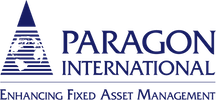How to Optimize Fixed Asset Disposal to Improve Your Cash Flow
We all know that renovations are costly, but investors often don’t realize that they can recover quite a bit of cash during the renovation process. How? By correctly calculating and recording the value of their fixed asset disposals.
Here are 3 steps you can take to maximize your renovation project’s return on investment.
Follow These 3 Steps to Make the Most of Your Renovation’s Fixed Asset Disposal Process
When you renovate a building, you almost always need to remove existing building components. Ceilings, walls, flooring, wall coverings, light fixtures, ductwork, wiring, and plumbing components are often tossed in the trash – but there is no reason to toss your cash in the trash as well.
If you properly account for and write off these items, you can reduce your income taxes. You may also be able to reduce your property taxes and property insurance coverage costs.
Follow these 3 steps:
- Identify and record your unknown, unreported, and known Units of Property before beginning your renovation project.
The IRS has finalized Tangible Property Regulations that govern repairs, maintenance, and partial dispositions for Units of Property (UoP). Before starting your project, make sure you have a cost segregation expert assess your building to identify, count, and segregate all your allowable tangible assets under current IRS statutes.
- Conduct retrospective appraisals to determine the fair market value of each UoP.
Once you know what you have, the next step is to know what it’s all worth. Since it is unlikely your firm installed the components initially or still has detailed records for every component, this typically requires some backtracking. Your cost segregation expert will review construction costs in the region, material databases for comparable items, and analyze drawings to determine the original appraisal costs of each UoP.
- Determine the current Net Book Value tax basis of each UoP for write-off purposes.
Once you know the detailed components of what you have and what it’s worth, you can start taking back your cash. As you progress through demolition and renovation, keep careful track of your fixed asset disposal. For each item, start by calculating the difference between the UoP’s accumulated depreciation and its retrospective market value:
Retrospective market value – accumulated depreciation = NBV
As you can see in the formula above, the remainder after this calculation will be the item’s Net Book Value (NBV). If the NBV for an item is greater than zero (or its salvage value), you can write off that amount as a loss. Add up your total losses as your renovation write off, so you can accurately reduce your net taxable income and claim the tax savings you deserve.
You can see an example of this below:
Important note: Since the IRS created and approved this process, you would be right to assume that it will require detailed supporting documentation. Just like every other IRS deduction, make sure that you maintain detailed work papers and IRS audit documentation to support your fixed asset disposal calculations – or ask your cost segregation expert to do that for you.
Get Your Numbers Right – Work with the Fixed Asset Experts at Paragon International
Though there are only 3 steps to this process, it does require quite a bit of background knowledge to be both comprehensive and accurate with your calculations. Applying the IRS’s final Tangible Property Regulations (TPR) to a building full of broken, discarded, and damaged, or otherwise unappealing components is tough work.
You don’t want to make mistakes with a tax process, so the smart choice is to work with a deeply experienced team. Experts will know how to correctly assess and document the tax impacts between various Units of Property and the TPR’s stated 9 key building systems.
Learn More About Paragon’s Process
Serving clients since 1985, Paragon International, Inc. provides independent, impartial and accurate cost segregation analyses, and property valuations and appraisals to assist in and support decisions related to taxes, risk management, investment, financing and corporate planning. Our consultants have extensive fixed asset experience – they’re fixed asset experts. Because of that we are able to offer a unique combination of irreplaceable human resources and advanced technology. We have specialists experienced in valuing closely-held securities, patents and other intangible assets, business enterprises, buildings, equipment and real estate. In addition, Paragon provides complete inventory and asset management services and solutions, including software customization and training, barcode labels and scanners, and tailored inventory services such as data conversion and integration, asset inventories, asset policies, cost reconciliation, and appraisal services. Contact Paragon International to discover how we can help you.





